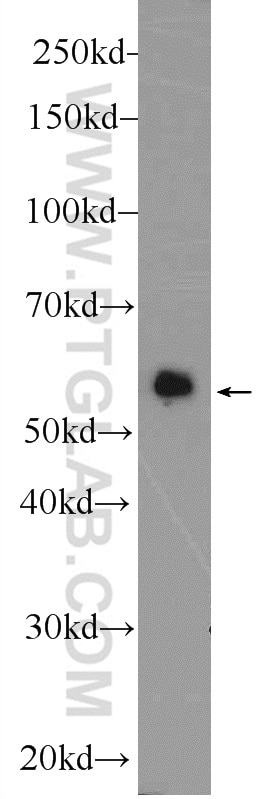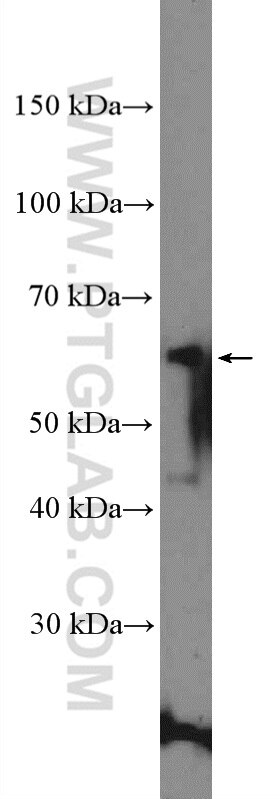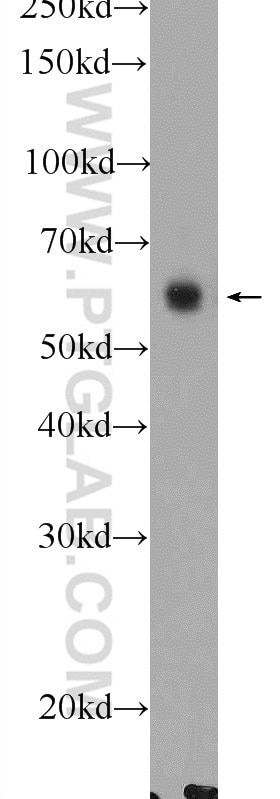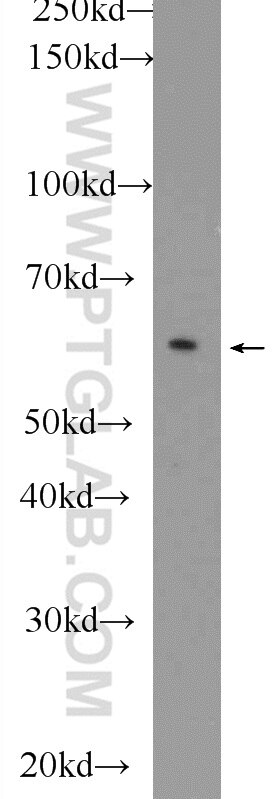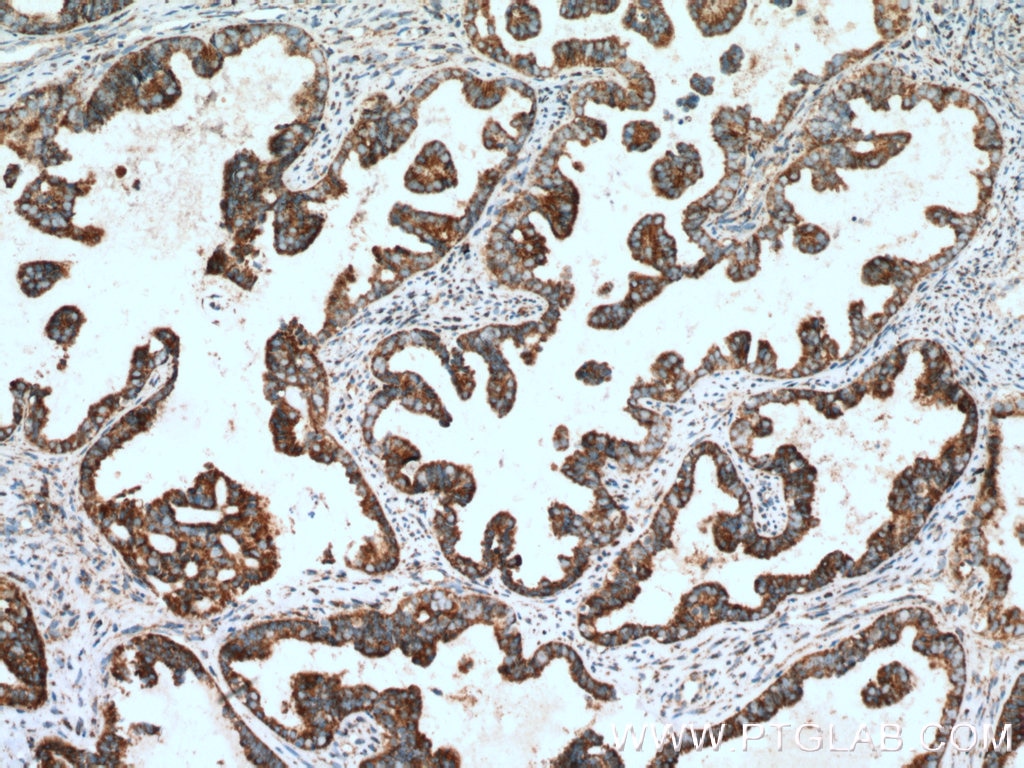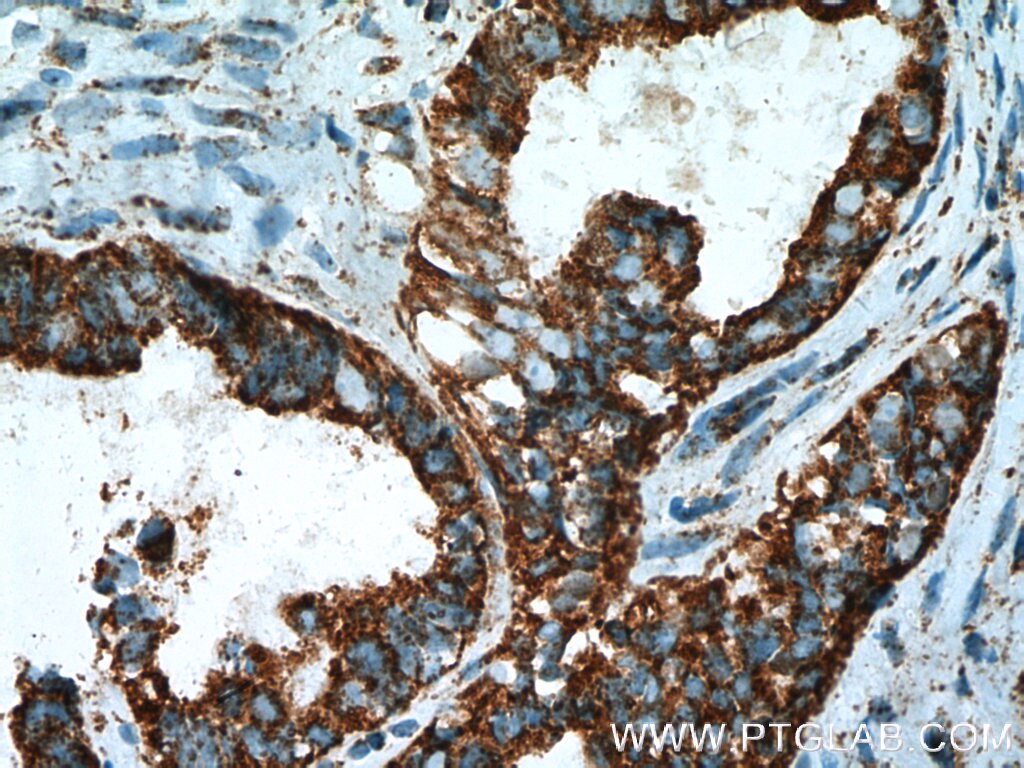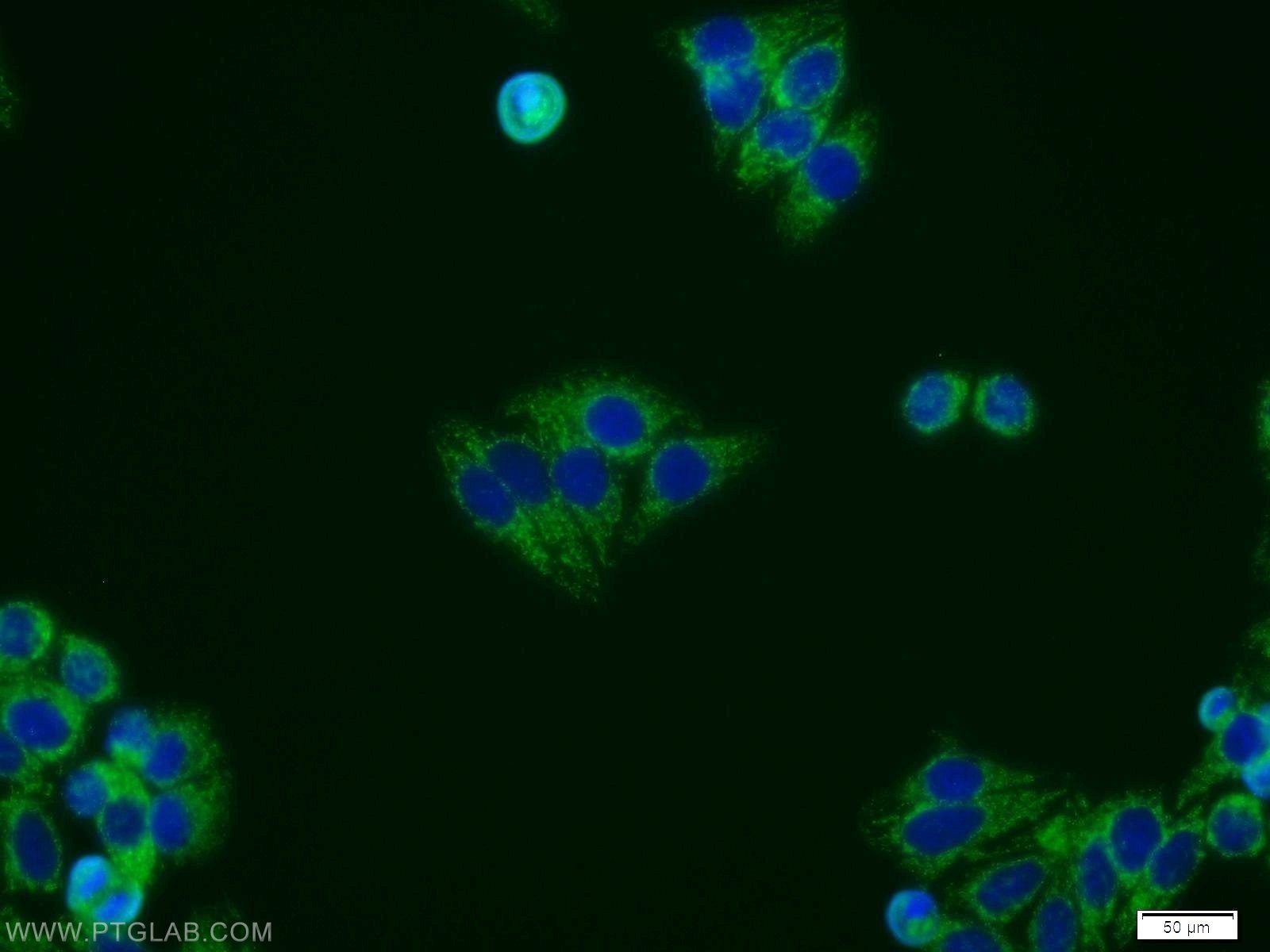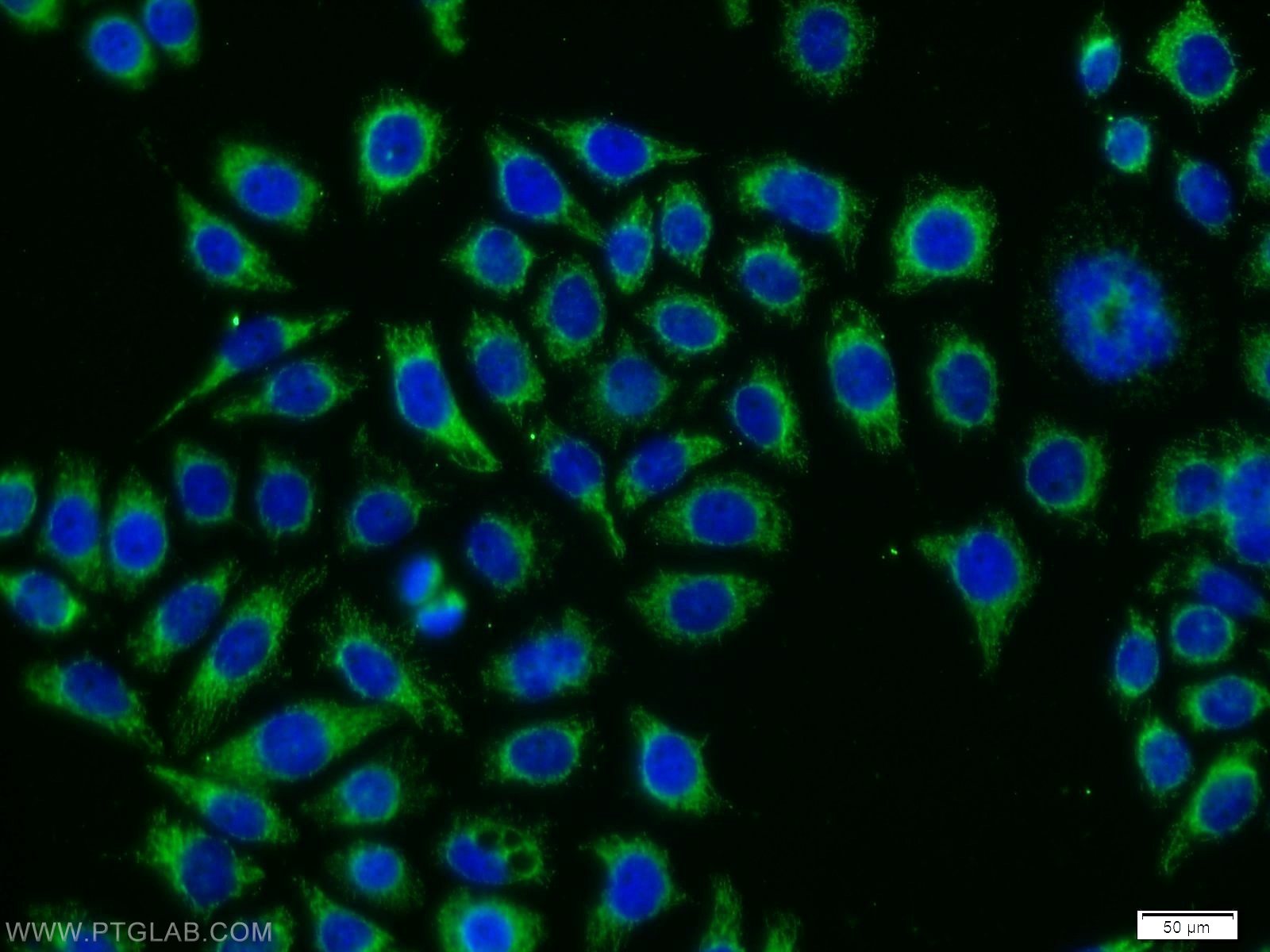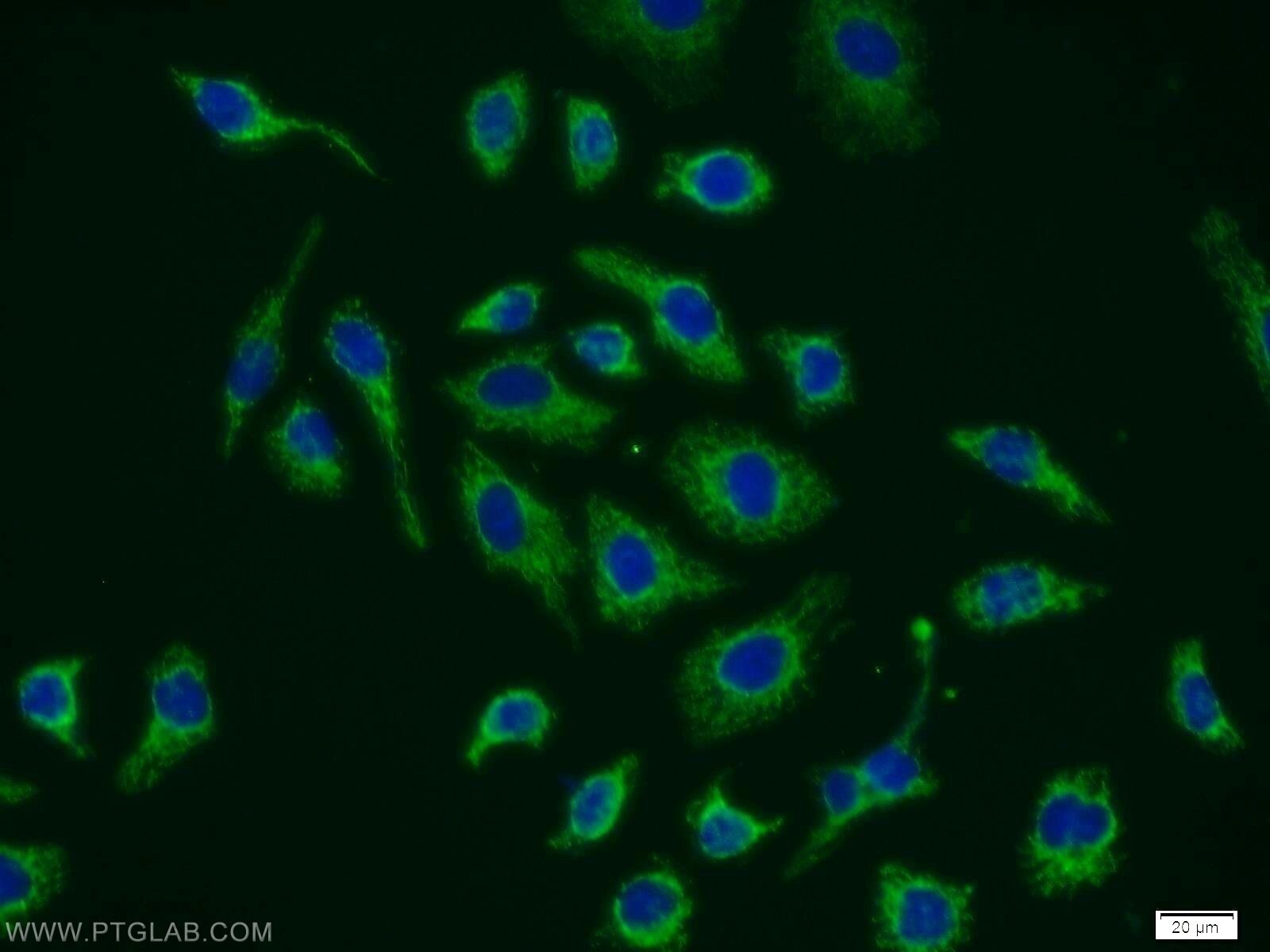DPP9 Polyklonaler Antikörper
DPP9 Polyklonal Antikörper für WB, IF, IHC, ELISA
Wirt / Isotyp
Kaninchen / IgG
Getestete Reaktivität
human, Maus
Anwendung
WB, IF, IHC, ELISA
Konjugation
Unkonjugiert
Kat-Nr. : 11568-1-AP
Synonyme
Galerie der Validierungsdaten
Geprüfte Anwendungen
| Erfolgreiche Detektion in WB | HepG2-Zellen, A2780-Zellen, Mausherzgewebe, MCF-7-Zellen, PC-3-Zellen |
| Erfolgreiche Detektion in IHC | humanes Ovarialkarzinomgewebe Hinweis: Antigendemaskierung mit TE-Puffer pH 9,0 empfohlen. (*) Wahlweise kann die Antigendemaskierung auch mit Citratpuffer pH 6,0 erfolgen. |
| Erfolgreiche Detektion in IF/ICC | HepG2-Zellen, MCF-7-Zellen, PC-3-Zellen |
Empfohlene Verdünnung
| Anwendung | Verdünnung |
|---|---|
| Western Blot (WB) | WB : 1:500-1:1000 |
| Immunhistochemie (IHC) | IHC : 1:50-1:500 |
| Immunfluoreszenz (IF)/ICC | IF/ICC : 1:10-1:100 |
| It is recommended that this reagent should be titrated in each testing system to obtain optimal results. | |
| Sample-dependent, check data in validation data gallery | |
Produktinformation
11568-1-AP bindet in WB, IF, IHC, ELISA DPP9 und zeigt Reaktivität mit human, Maus
| Getestete Reaktivität | human, Maus |
| Wirt / Isotyp | Kaninchen / IgG |
| Klonalität | Polyklonal |
| Typ | Antikörper |
| Immunogen | DPP9 fusion protein Ag2145 |
| Vollständiger Name | dipeptidyl-peptidase 9 |
| Berechnetes Molekulargewicht | 863 aa, 98 kDa |
| Beobachtetes Molekulargewicht | 98 kDa |
| GenBank-Zugangsnummer | BC037948 |
| Gene symbol | DPP9 |
| Gene ID (NCBI) | 91039 |
| Konjugation | Unkonjugiert |
| Form | Liquid |
| Reinigungsmethode | Antigen-Affinitätsreinigung |
| Lagerungspuffer | PBS mit 0.02% Natriumazid und 50% Glycerin pH 7.3. |
| Lagerungsbedingungen | Bei -20°C lagern. Nach dem Versand ein Jahr lang stabil Aliquotieren ist bei -20oC Lagerung nicht notwendig. 20ul Größen enthalten 0,1% BSA. |
Hintergrundinformationen
Dipeptidyl peptidase 9(DPP9), is a member of the S9B family in clan SC of the serine proteases. DPP9 has 3 isoforms with MW of 95, 98 and 101 kDa. DPP9 is involved in the regulation of the activity of their substrates and have been linked to a variety of diseases including type 2 diabetes, obesity and cancer.
